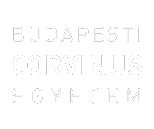Varga, Anett Eszter (2021) The Effects of Globalization on the Hungarian Language through the Comparison of Monthly and Weekly Women’s Magazines. BA/BSc szakdolgozat, BCE Kommunikáció és Szociológia Intézet, Kommunikáció- és Médiatudomány Tanszék.
|
PDF
- Requires a PDF viewer such as GSview, Xpdf or Adobe Acrobat Reader
397kB |
Absztrakt (kivonat)
As a result of the technological, economic and cultural dominance of the United States and Britain, English became the lingua franca of today’s society and slowly reached every part of the world. Since Hungary has been cut off from the western world for several decades, it was only after the collapse of the communist regime that a greater extent of Anglicisms and Americanisms have been imported into the Hungarian language. The importation process was predominantly supported by the mass media as an effect of globalization. Therefore, in this thesis the author chose to analyze English loanwords in the Hungarian language through the comparison of glossy monthly and non-glossy weekly women’s magazines. Due to the complexity of the topic, the thesis provides answers for two hypotheses. In the first Hypothesis, the author states that as an effect of globalization there will be a growing number of English loanwords on the cover of both the monthly and weekly Hungarian women’s magazines regarding 2010, 2015 and 2020. The second hypothesis states that there will be more Anglicisms and Americanisms in the monthlies, than in the weeklies. In order to provide adequate results for the comparative analysis, three of the most popular monthlies and weeklies were chosen based on the audit of the second midterm of 2020, conducted by MATESZ (Hungarian Audit Bureau of Circulations). The chosen monthly magazines are Joy, Glamour and Elle Hungary, while the weekly magazines are Nők Lapja, Kiskegyed and Meglepetés. Because of the restrictions caused by the pandemic, only the magazine covers have been analyzed regarding both categories, as well as only issues stemming from the years 2010, 2015 and 2020. In total 91 monthly magazine covers and 108 weekly magazine covers have been analyzed. The reason why the numbers do not match is that in some cases monthlies needed to publish compound issues due to financial constraints caused by the global pandemic. After the collected English loanwords have been counted on the basis of token frequency, the author categorized them according to their domain and level of morphemization, as well as compared which adaptation strategy is more likely to appear on which cover. The results show that the first hypothesis, which states that as an effect of globalization there will be a growing number of English loanwords on the covers, is proved to be false. While non-glossy weekly magazines use a growing number of English loanwords, glossy monthlies tend to use less and less with every five years. Regardless of the overall false hypothesis, these changes within English loanword frequency concerning the covers can be owed to the effects of globalization. The weekly Hungary based magazines are using a growing number of English loanwords, because they want to catch up to their international competitors. Monthly magazines, on the other hand, that are owned by foreign companies and have their headquarters located abroad, use fewer English loanwords because they use fewer words in total. Since the phenomena of globalization is linked to modernism by many scholars, it can be assumed that magazine covers are designed in order to satisfy this need of a more modern and minimal aesthetic by using less text in general. Furthermore, the decline in English loanword frequency can simple be the results of the financial constraints caused by the global pandemic. Since companies needed to publish compound issues, which resulted in less words in general. On the other hand, the second hypothesis proved to be true, which claims that monthlies are more prone to using Anglicims and Americansisms. Despite the decline in the use of English loanwords on the covers of monthlies from 2010 until 2020, monthlies do use more Anglicisms and Americanisms than weeklies regarding every single analyzed issue. Several factors may have contributed to this outcome. Firstly, the fact that monthlies are owned by foreign companies and their headquarters are also located in that foreign country. As a result, monthlies use an international template, which can lead to the importation of English words, phrases and even full sentences. Thus there is a higher chance for Anglicisms and Americanisms to appear on the covers of monthlies. Secondly, they are targeting the younger generation. This assumption is based on the results of the secondary research. Monthlies have 22 percent of English loanwords with no substitution, while weeklies have only 15 percent. This shows that the target audience of the monthlies are more likely to have a better knowledge of English than the weeklies’. Moreover the constant occurring of words related to sex and dating also suggests a younger target audience. The results of both hypotheses proves, that globalization is highly effecting Hungarian women’s magazines and the motivation for importing new words, as well as the motivation for imitating the western cultures are high.
| Tétel típus: | BA/BSc szakdolgozat |
|---|---|
| Témakör: | Média és kommunikáció |
| Azonosító kód: | 14799 |
| Képzés/szak: | Communication and Media Science |
| Elhelyezés dátuma: | 12 Szept 2022 11:34 |
| Utolsó változtatás: | 12 Szept 2022 11:34 |
Csak a repozitórium munkatársainak: tétel módosító lap

